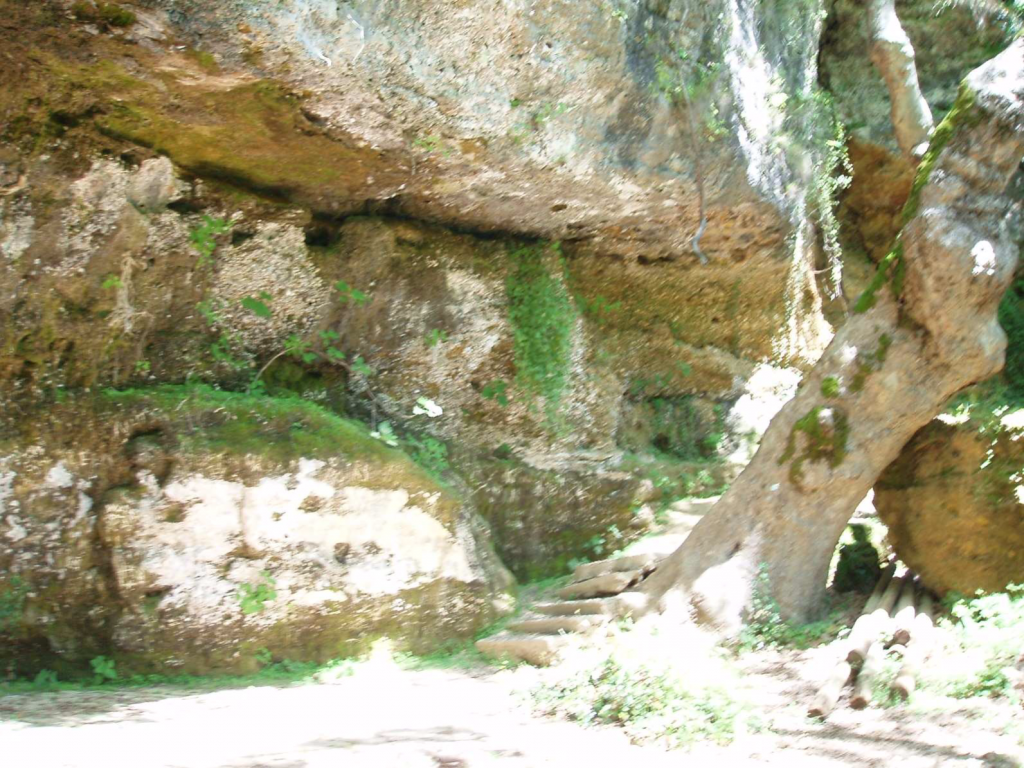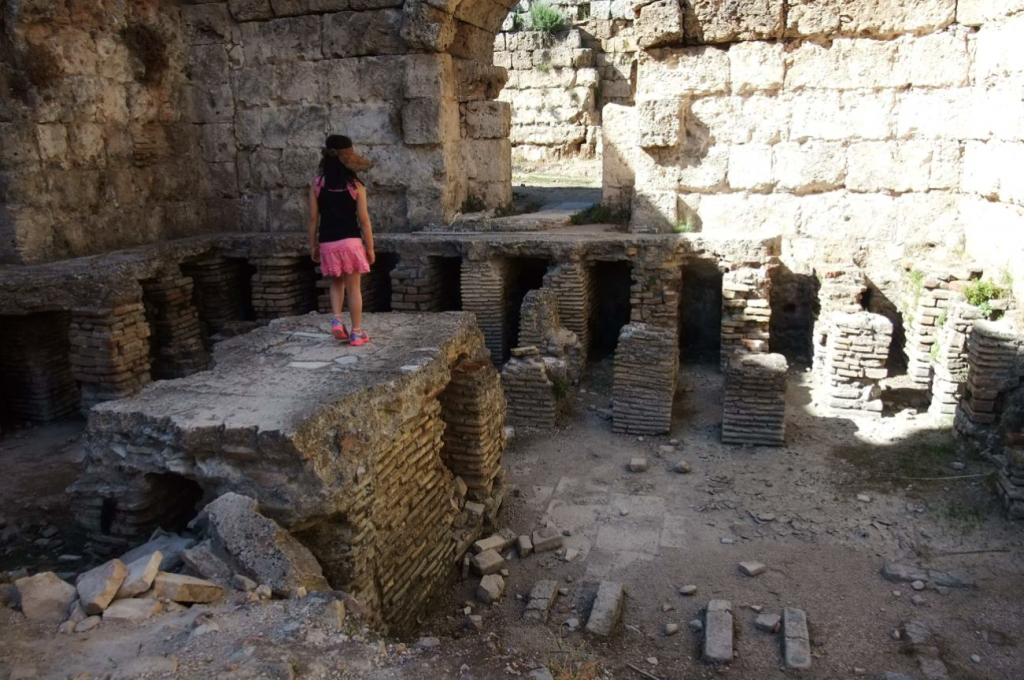by David R. Bridgland
Good morning everyone, for the final time on this trip, sadly.
We end on a high note this afternoon, with a couple of cracking localities. My favourite is the Kurşunlu waterfall park, an extraordinary combination of a relaxing tourist spot, with shaded tables for coffee and food (and ice cream!), walkways amongst beautiful trees, flowing channels, waterfalls, and GRAVEL exposures! It was at this wonderful place, in 2014, that Tuncer Demir, my former PhD student in Durham and continuing research collaborator, informed me in a phone call to Alison’s mobile (not having one myself) that he would be taking up a new job as Professor in Geography at Antalya University, allowing his future participation in repeats of this field trip.

You can wander around amidst the gravel to your heart’s content (what do you mean, you’ll have a camel ride instead?!?). This is gravel cemented by calcareous precipitation, just as seen in the distance, and in the form of blocks used in buildings, at Phaselis, all those days ago. Here, at close quarters, we can see the bedding, channels and other classic features that record the presence of a wide gravel-bed river at some point in the past. The flowing water here now belongs to a tributary of the River Aksu; the latter, draining out of the Taurus Mountains, once provided a navigable connection between the ancient city of Perge, our final stop, and the Mediterranean. We can see evidence of tufa formation on some of the waterfalls, perhaps aided by vegetation dams (barrages), as described in papers by Trevor Ford, Martyn Pedley and others (I shall send a couple of pdfs for reading on the journey home). See HERE.

I think the waterfalls relate to the river flowing from one of the higher travertine platforms to the lower coastal one. You will remember these from our first day. They are interesting and we would like to study them but, like so many things, we haven’t got round to it yet. The source of modern tufa formation is probably the reworking of calcium carbonate from the travertine. This causes such highly calcareous river water that tufa can form were flow is slowed, without the proximity of springs.

Perge is the largest and most impressive of the ancient cities we’ll visit. It is quite a task to see it all in the time available, especially with the sun beating down (the usual situation), and made worse by the determination of some of us to find exposures of the travertine upon which it is built in the higher parts of the site…
See you later
Best wishes
David